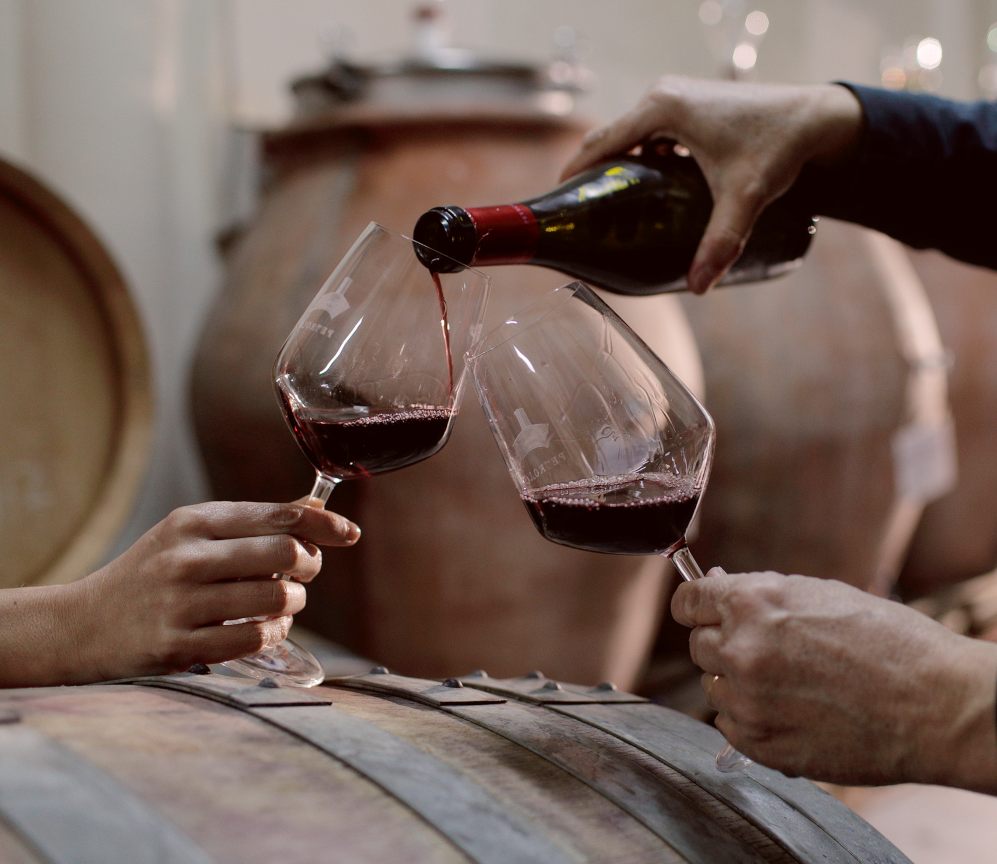
The wines of Valdarno “…I believe that a lot of happiness goes to the men who are born where good wines are found…”, said Leonardo da Vinci. The particular composition of the lands of the Upper Valdarno and its favorable exposure have allowed its vines to produce high quality wines since ancient times.
Numerous sources attest that vine cultivation and wine production were widespread practices in the farms set up in this area since the Etruscan and then Roman time, but it was in the medieval period and during the Grand Duchy of Tuscany age that the wine-growing area had its golden period.
The edict of Cosimo III de’ Medici of 1716 notes a situation of high quality wine production already widely consolidated and recognized at that time.
The Etruscans were already able to vinify in the 4th century B.C.
In the 1st century A.D. Pliny the Elder describes the areas surrounding Arezzo as the best ones for viticultural production and refers to numerous varieties of grapes cultivated.
In the Middle Ages monks were the ones who took care of the vines and protected the cultivation from the risk of theft and devastation.
In the Florentine Land Registry of 1427, in addition to the technical cadastral quotations, reference is also made to the value of the products obtained in the different areas with the aim to establish a ranking of the merit and price of the wines.
Among the most valuable wines surveyed by the Florentine land registry were those produced in the areas of San Leolino, Cennina and Galatrona, both Trebbiani (white) and Vermigli (red).
Cosimo III considered it necessary to protect local wines from counterfeiting from Chianti, Pomino, Carmignano.
During the XIX and XX centuries the wines produced in Upper Valdarno were progressively united to the name Chianti, initially in a generic way, finally with the specification of the sub-area Colli Aretini.
This assimilation with Chianti did not respect the complexity of local production.
Grapes that gave rise to numerous “Supertuscan” came from this territory and had acquired a well-known reputation among professionals.
These are wines that come from native vines, especially Sangiovese , but also Pugnitello, Foglia tonda or white Malvasia, or from allochthonous vines such as Merlot, Syrah, Cabernet Sauvignon little or nothing had to share with the disciplinary of Chianti.
The territorial characterization, the particular taste of the wines have demanded to go back to a regulation that had already pointed out , in the seventeenth and eighteenth centuries , the differences, the personality of the local production areas and the high quality of wines.
In 2011, the Valdarno di Sopra DOC was born, one of the most recent in the panorama of Denominations of Controlled Origin regulated by the modern regulations established in the 60s.The main grape variety of Valdarno is Sangiovese, which distinguishes most of our wines and is recognized not only for its fragrance but also for its tannins and for its freshness. Most of the Valdarnesi producers, although using innovative methods, vinify according to passion, care and traditional techniques and that is why in the composition of wines, Sangiovese is still the most popular grape variety, embodying the Tuscan roots and character.
Great wines derive From the work, love, patience and dedication of the Valdarnesi wine producers, combined with the benevolence of mother nature .
